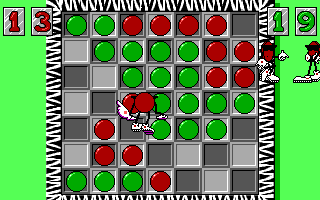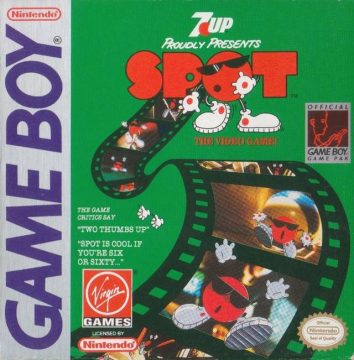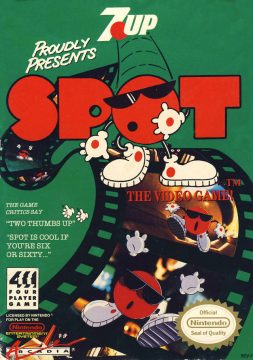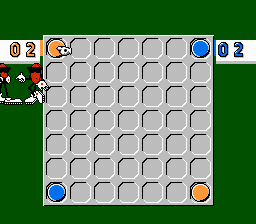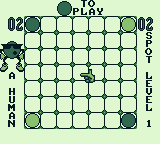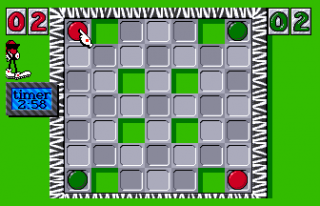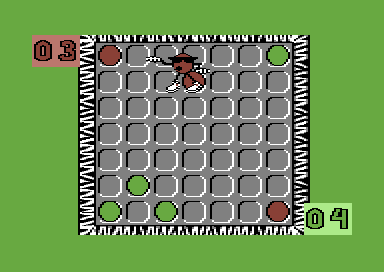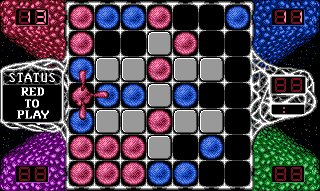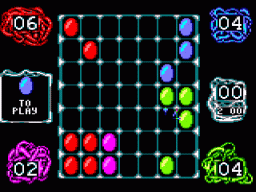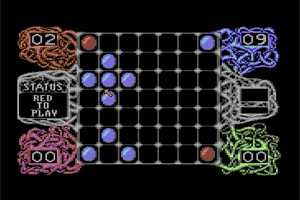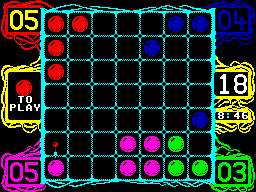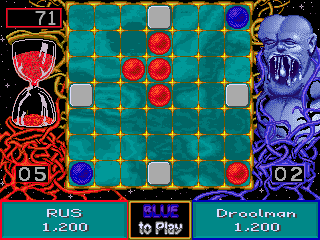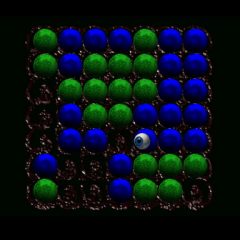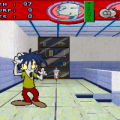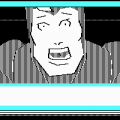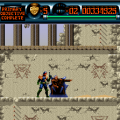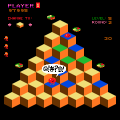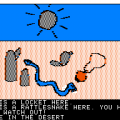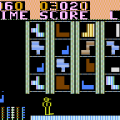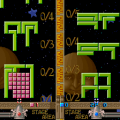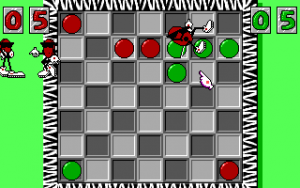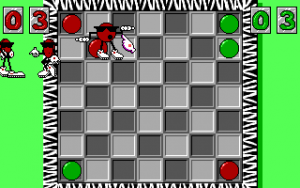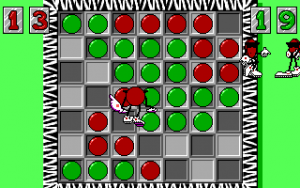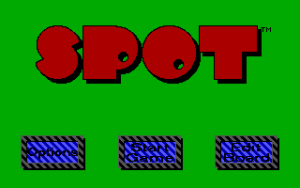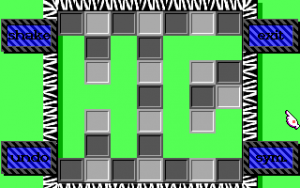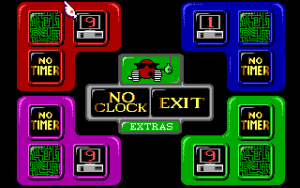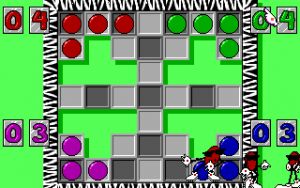- Spot: The Video Game
- Spot: The Cool Adventure
- Cool Spot
- Spot Goes to Hollywood
Throughout the early ’90s, gaming was dominated by mascots of all shapes and sizes. Maybe you preferred the good old-fashioned platforming of Mario, or maybe you liked the sheer speed of Sonic. Or maybe you had an interest of one of the many, many mascots in between. Spot was one of these mascots, but unlike most gaming mascots, he didn’t start off in video games, himself. He was actually the mascot of a soft drink called 7-Up, a citrusy, clear beverage that’s best compared to Sprite. Spot’s been gone and forgotten for more than a decade, now. Before Spot’s eventual spiral into obscurity, however, he left behind a few games across all the major systems of the time. None of them are particularly amazing, but they are very much products of their time.
Honestly, all the Spot games are pretty generic. Only one of the games actually has any mention of 7-Up at all. If you weren’t aware of the soda, then you’d probably think Spot was an incredibly lazy attempt at a mascot, since he’s just a red circle with sneakers and shades. (Of course, you might think that even if you know what 7-Up is.) That’s not to say that you couldn’t get any enjoyment from any of the Spot games, it’s just that so many games do the same thing so much better, even when you factor licensed games into the equation.
Have you ever played Reversi, Othello, or Hexxagon? If so, you instantly know more or less everything about this game. Basically, Spot is a simple board game for two to four players. And why would you prefer to play this version over one of the many other variants of Reversi out there? Well, because it has Spot! And he does funny animations! And… well, that’s kind of it, really.
If you’ve never played Reversi of any sort, how it works is that you have a square board, with each player putting a piece of their color on a corner of the board. A piece can either move one space in any direction, in which case it “copies” itself to the new space, or move two spaces, which means it’ll move, but won’t copy itself. Whenever a piece of your color moves next to any of the opponent’s pieces, it’ll change to your color, and become one of your pieces. This means, with the right moves, you could move one of your pieces just once and end up taking about six or so of your opponent’s pieces. The game ends when only one player remains on the board, or when the board is entirely full, in which case, whoever has the most pieces wins.
It’s honestly pretty fun once you’ve figured out how to play, not that it takes all that long. It can almost reach something resembling excitement if you have a good player, given how many turnarounds and comebacks you can get yourself into. You might think you’ve made a good move when you’ve captured about three of your opponent’s pieces, when it turns out that he can move right into your opening you made and nab about eight of them. It’s obviously not going to replace something like Gunstar Heroes for a high-octane thrill ride, but it’s decent enough for what it is.
You’re given a decent enough number of options for this sort of game, considering there isn’t a whole lot you can do to change the rules. You can set how many players you want to be controlled by the AI, and how well the AI will play. You can also set a move timer, if you’d prefer to have to make your moves quickly. And if you’re feeling really wild, you can set the board so that there are “blank” spots in it where the pieces can’t go. None of these options are going to change the game all that much, of course, but it’s nice that they’re there.
So you might be wondering how Spot figures into a game like this. Basically, every time you make a move, Spot will pop up out of the piece and do a little animation, depending on which direction and how many spaces you move. These range from things like pole vaulting, breakdancing, cartwheeling, and about a dozen or so other animations. That’s really pretty much all the involvement he actually has, aside from popping out of the screen and giving you a raspberry whenever a game finishes. The animations are pretty nice to look at, even if they tend to repeat, and they do add a little personality to what would otherwise be an incredibly generic board game.
And that’s basically it. It’s a very simple board game, one that doesn’t have anything remotely to do with the character. And there’s a funny story for that, actually. The Atari ST and Amiga versions of this game started out as a budget title called Infection, which didn’t have any kind of license attached to it. When Virgin got the license, they slapped Spot onto the board game they had laying around, hiked up the price, and sold it on shelves. The original programmer released the original version for play, too, if you know how to work an Amiga emulator. It’s pretty much the exact same game, only you don’t get to watch Spot animate whenever you make a move. So, it’s basically even MORE boring than what we got.
The Game Boy version is pretty cut down compared to the other versions. You can only have two players, which is understandable, given that you have to tell who the players are by what shade of grey they are. They’ve also removed nearly all the Spot animation, so whenever you move a piece, it just kind of “goops” over to where you place it. The only place Spot actually shows up is on the title screen and whenever it’s your turn, where he does a flip. On the bright side, there’s a really cool song that plays when the game waits for you to make a move, one exclusive to this version. The song goes on for quite a while, and it has a very Follins-esque sound to it. Problem is it stops every time you actually make a move, so the best part of the game is actually not playing it at all.
The NES version is pretty close to the computer versions, and comes with all the extra options. There’s also a nice touch on the options screen where there’s a TV that loops different animations, and you can “click” on the knob to change the channel. They’ve also replaced the scene when the game ends to Spot sticking his tongue at you to a stadium with fireworks. Maybe Nintendo thought it would make children be disrespectful to their parents or something?
The arcade version actually runs off of Amiga hardware, so it looks and sounds more or less identical to that version. The only major difference is that you have to feed coins into the machine to add to the game timer. Compared to the DOS version, the sound on the Amiga version is a little better than what you’d get from the Adlib, although not by much.
The rules of this game originally sprang from a game called Infection, released in 1988 and developed by Dave Crummack and Craig Galley. Here, the chips were meant to be cells. The original publisher was Wise Owl Software, who sold the rights to Virgin Mastertronic UK. They then sold the rights to The Leland Corporation, who created an arcade version called Ataxx. This version is more gory and features an assortment of monsters, as well as a timer. At the same time, the US branch of Virgin got the rights to the game, and that’s how Spot came to be. Spot was overseen by Graeme Norton, who also went on to be one of the minds behind The 7th Guest. When programming the game, he reimplemented the ruleset and turned it into the Microscope puzzle. Like its original iteration, the chips are now cells. It’s regarded as the most infamous puzzle in the game because of its overt difficulty. The iOS port of The 7th Guest is missing this puzzle, but instead was redone and released separately as an iPad-only game, under the name The 7th Guest: Infection.
Comparison Screenshots
